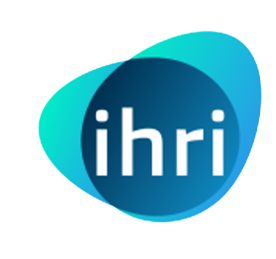Risk management has become a core component of modern business strategy, but the tools and certifications available to risk managers are often subjects of debate. Among the most recognized is the ISO 31000:2018 Risk Manager certification, an internationally acclaimed standard that provides guidelines and principles for managing risk within organizations. But in an industry crowded with certifications and methodologies, some question whether ISO 31000 is truly a game-changing tool or just another credential to add to the resume.
In this article, we’ll explore the value of the ISO 31000:2018 Risk Manager certification, its real-world applications, and whether it delivers tangible benefits to risk managers and the organizations they serve. Is this certification essential for effective risk management, or is it simply a badge with little impact on day-to-day operations?
What Is ISO 31000:2018?
ISO 31000:2018 is a comprehensive risk management standard that provides a structured framework for organizations to identify, assess, and manage risks. It is applicable to any industry and can be tailored to organizations of any size, from small businesses to multinational corporations. The standard is designed to integrate risk management into every aspect of an organization, from strategic planning to decision-making and daily operations.
The ISO 31000:2018 framework focuses on key principles such as:
- Risk identification: Recognizing internal and external factors that could affect an organization’s objectives.
- Risk assessment: Evaluating the likelihood and impact of identified risks.
- Risk treatment: Developing strategies to mitigate, transfer, accept, or avoid risks.
- Continuous monitoring: Ongoing evaluation of risk management processes to ensure effectiveness and adaptability.
The goal of ISO 31000 is to create a culture of risk awareness, where organizations proactively manage uncertainties rather than reactively addressing crises.
The Benefits of ISO 31000 Certification for Risk Managers
For risk managers, earning the ISO 31000:2018 Risk Manager certification can provide several key benefits, both for personal career development and for enhancing an organization’s risk management capabilities.
- A Structured Approach to Risk
One of the greatest advantages of ISO 31000 is its structured and systematic approach to managing risk. Risk managers often deal with a wide range of uncertainties, from financial and operational risks to cybersecurity threats and regulatory changes. The ISO 31000 standard offers a clear framework that risk managers can use to navigate these challenges.
By following the ISO 31000 principles, certified risk managers ensure that their organization’s risk management processes are aligned with global best practices. This structured approach not only makes risk management more efficient but also helps organizations identify risks that may otherwise go unnoticed.
- Improved Decision-Making
Effective risk management goes hand in hand with informed decision-making. ISO 31000 emphasizes the importance of integrating risk management into the decision-making process, ensuring that all key business decisions are made with a clear understanding of potential risks and rewards.
For risk managers, this certification provides the tools to communicate risk more effectively with senior leadership. With a standardized framework in place, risk managers can present clear, data-driven assessments that support sound business decisions. This can lead to better outcomes in areas such as investment planning, resource allocation, and strategic growth.
- Global Recognition and Credibility
ISO certifications are globally recognized and respected across industries. Earning the ISO 31000:2018 Risk Manager certification not only validates a risk manager’s expertise but also enhances their credibility with stakeholders, clients, and regulators.
In industries such as finance, healthcare, and manufacturing, where regulatory compliance is critical, having an ISO-certified risk manager on the team signals to stakeholders that the organization is serious about managing risk effectively. This can be a competitive advantage when bidding for contracts, securing partnerships, or attracting investors.
- Adaptability Across Industries
One of the unique aspects of ISO 31000 is its adaptability. Unlike some risk management frameworks that are specific to certain industries, ISO 31000 can be applied to any sector. Whether an organization operates in healthcare, finance, construction, or technology, the principles of ISO 31000 remain relevant.
This adaptability makes ISO 31000 an essential tool for risk managers who work in diverse environments or for organizations that operate across multiple industries. Certified risk managers can apply the standard’s principles to various types of risks, from operational and strategic risks to legal and reputational threats.
Is ISO 31000 Certification Just a Badge?
While the ISO 31000 certification offers numerous benefits, some critics argue that it’s simply another credential that risk managers can add to their resume without necessarily improving their day-to-day effectiveness. So, is the ISO 31000:2018 Risk Manager certification truly transformative, or is it just a badge?
- The Certification vs. Implementation Debate
One of the key criticisms of ISO certifications, including ISO 31000, is that earning the certification does not always translate into effective implementation. While the certification proves that a risk manager understands the ISO 31000 principles, it doesn’t guarantee that those principles will be effectively applied in practice.
For organizations to truly benefit from ISO 31000, they need to ensure that risk management processes are not only in place but are also continuously monitored and updated. Without proper implementation, the certification can become little more than a formality—a badge without real impact on risk management outcomes.
- Tailoring ISO 31000 to Fit the Organization
Another challenge is that the broad nature of ISO 31000 can make it difficult to apply in specific organizational contexts. Some critics argue that the standard’s general guidelines lack the granularity needed to address industry-specific risks. For example, a risk manager in the banking sector may find that ISO 31000 provides a solid foundation but requires additional customization to address the unique risks associated with financial institutions.
However, this flexibility can also be seen as a strength. The adaptability of ISO 31000 allows risk managers to tailor the standard to fit the specific needs of their organization, rather than adhering to a rigid, one-size-fits-all approach.
The Real-World Impact of ISO 31000
Despite the criticisms, many organizations that have adopted ISO 31000 report significant improvements in their ability to manage risk. A 2022 study by PwC found that 74% of organizations with an ISO 31000-aligned risk management framework experienced a reduction in operational risks, while 61% reported improved decision-making.
For risk managers, the certification provides a common language for communicating risks across departments, fostering collaboration and enhancing the organization’s overall risk culture. By following the ISO 31000 principles, certified professionals can help create a proactive risk management environment that prevents small issues from escalating into major crises.
Conclusion: More Than Just a Badge
While the ISO 31000:2018 Risk Manager certification may not be a magic bullet for all risk management challenges, it is far from being “just a badge.” For risk managers who are serious about creating structured, proactive, and globally aligned risk management strategies, ISO 31000 offers a valuable framework that can drive real change.
The key to making the most of the certification lies in effective implementation. Risk managers who earn the certification and apply its principles rigorously can transform their organization’s approach to managing uncertainty, leading to better outcomes and a stronger competitive position in the marketplace.
In a world where risks are constantly evolving, having a certified risk manager who can navigate these challenges with confidence is not just a nice-to-have—it’s essential for long-term business success.




